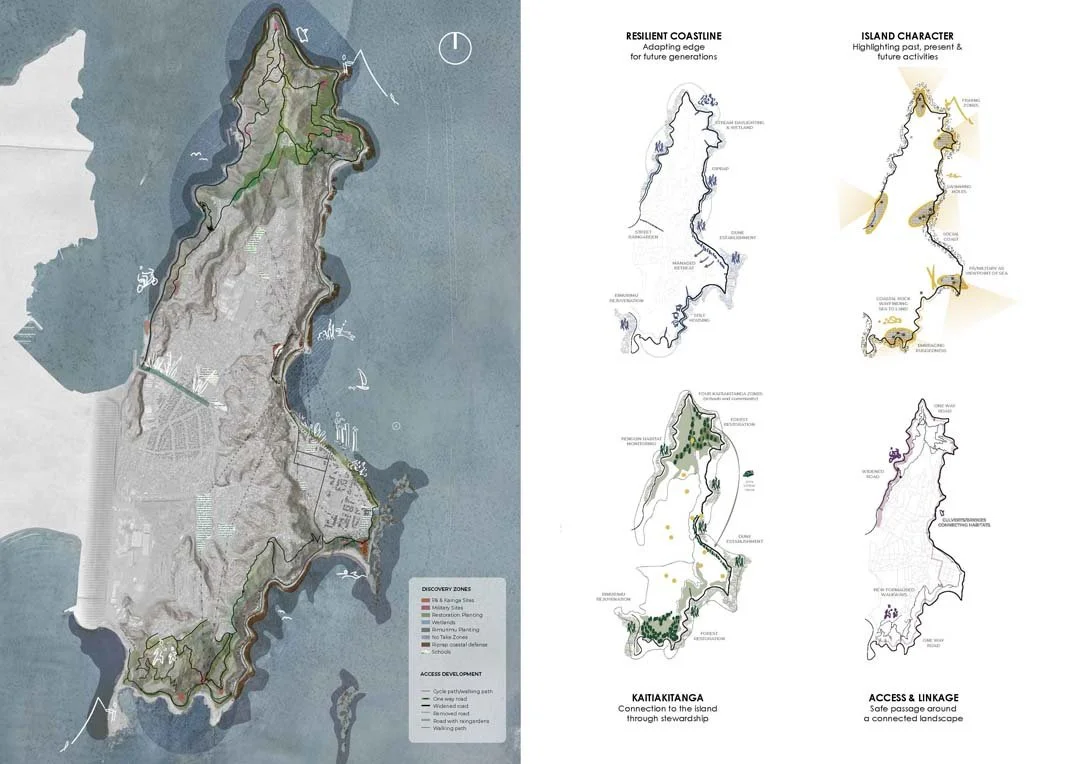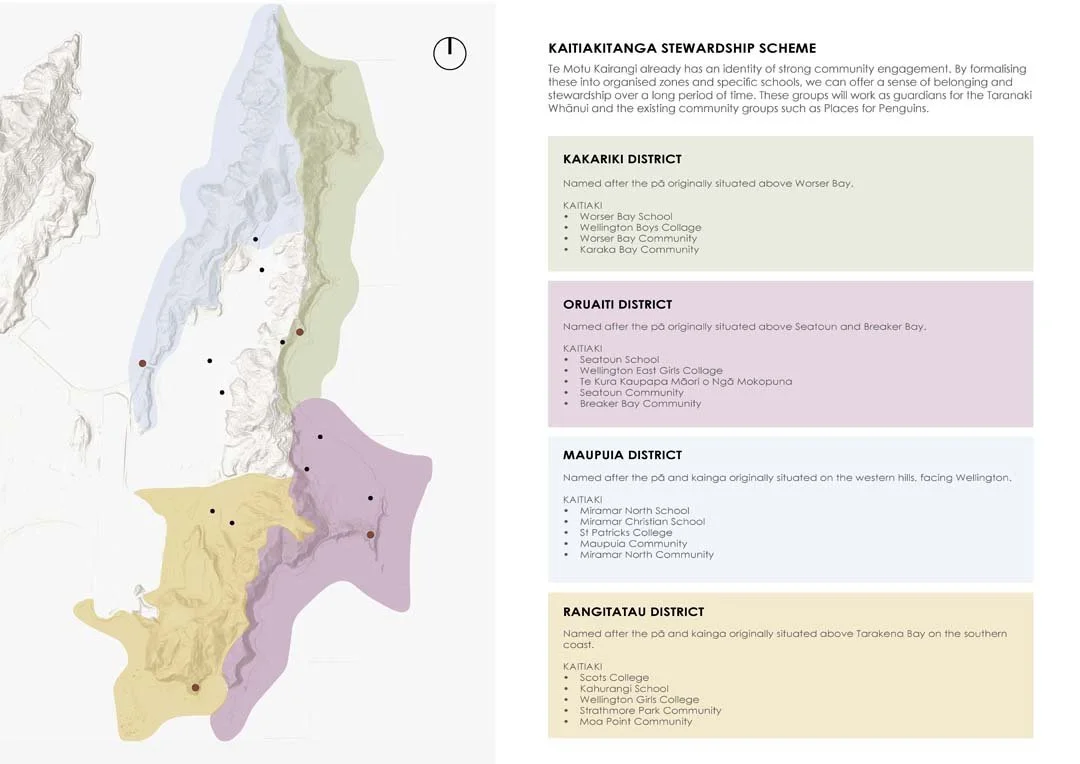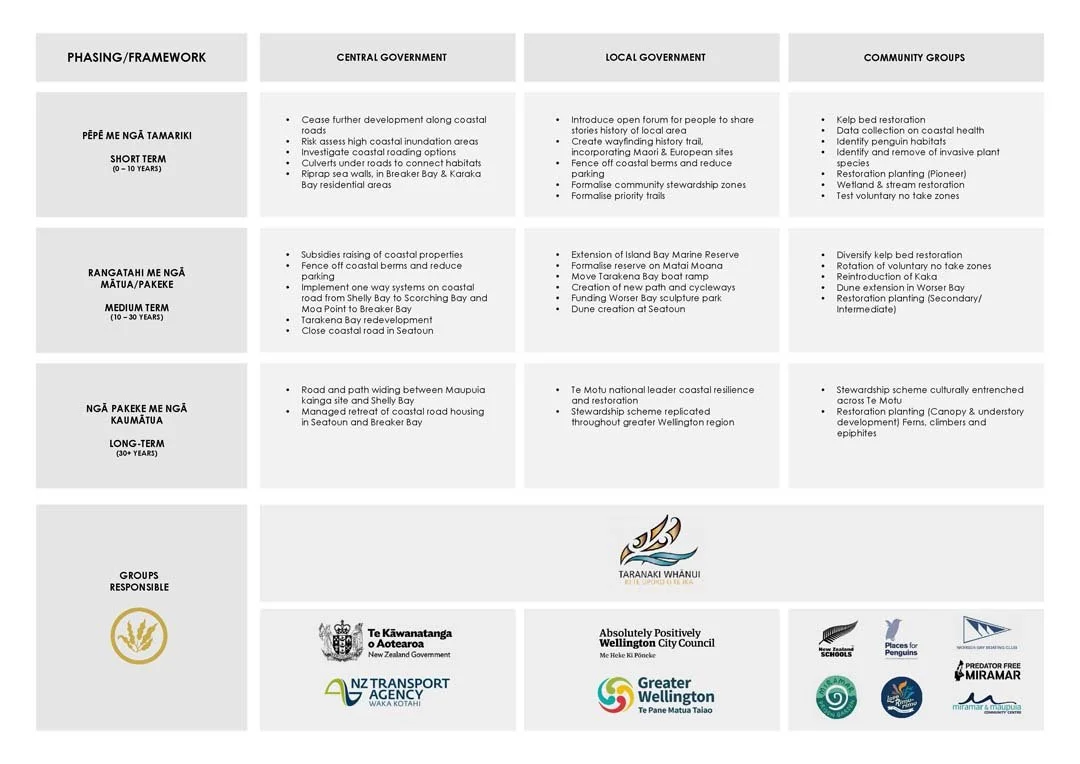
TE MANA O TE MOTU
Connecting to the power of the Island
Richie Green & Rebecca Yang (Group 03)
Te Motu Kairangi has been physically joined to the mainland over time, but its unique geography and ecological processes has fostered a strong “island identity” across Miramar Peninsula. This identity can be felt by those who connect to Miramar’s coastline, heritage, biodiversity and rugged character. Our project aims to acknowledge and reinforce this connection to the power of the island, past present and future.
Building on strong foundations of local stewardship, our interventions expand restoration efforts across the peninsula. This includes enhancing habitats for penguins and rimurimu, and establishing vegetation corridors, daylighting streams that connect inland and coastal ecosystems. Coastal pine stands support native forest succession and are repurposed for dune establishment. Additionally, the peninsula is divided into four zones, each adopted the closest suburb in conjunction with local & Wellington schools. These youth-led teams contribute to planting, data collection, and ongoing site care, thereby ensuring long-term investment in ecological knowledge and cultural belonging.
Movement across the peninsula is reimagined through new pathways, formalised access points, and a cohesive wayfinding strategy using materials that link the sea and land. Natural coastal stone are used as visual markers of the sea’s impact on island life, while building awareness of the environments they move through. The use of timber and concrete materials symbolises the historic layering of Māori Pā and Pākehā fortifications, reminding us that this land has always been shaped by diverse communities and their ways of living with the coast.
Climate change is part of this island’s story. Our response integrates design-sensitive riprap and dune systems with managed retreat strategies. These include elevated housing, reconfigured roadways, and soft shoreline edges that protect both people and habitat.






